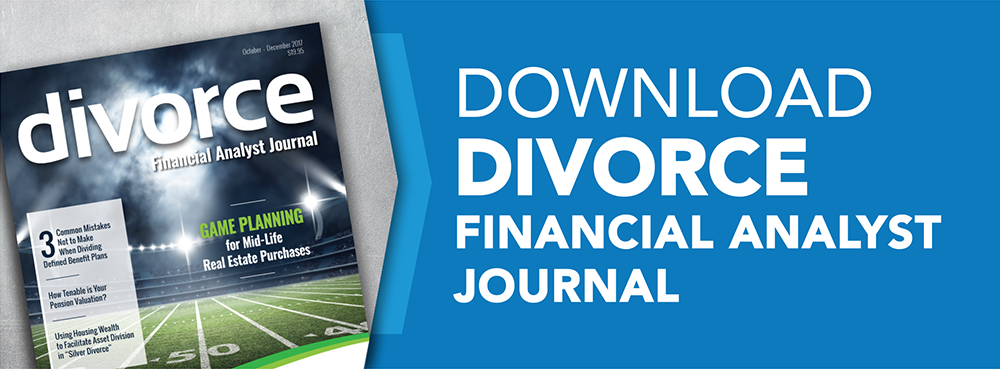How to Spot Financial Deception in Divorce
By Donna Cheswick, CDFA, CQS On 11/03/2025
During divorce when emotions are careening out of control, one spouse often believes that the other could be hiding assets.
According to a poll by the National Endowment for Financial Education (NEFE) 43% of people who reported having combined finances admitted to committing some form of financial deception. Of those, 85% said the deception negatively affected their relationship. More than one-third admitted to hiding a purchase, bank account, statement, bill, or cash from their partner, while 21% admitted to lying about debt, income, or earnings.
If this level of financial deception occurs during a relationship, it is reasonable to assume that in divorce – when trust is already broken – such behavior may be even more common. Delays in providing financial documentation or outright refusal to produce it can be a strong indicator that a spouse could be attempting to conceal information or control its flow. Fortunately, money usually leaves a trail and following it can uncover hidden assets.
Always request a complete copy of your tax return: When the return is not supplied that could be a sign that there might be information that one spouse does not want the other spouse to see. Missing pages, schedules, and attachments could hide crucial details, including types of income, interest or dividends earned, and various deductions. Look for overpayment of taxes, which could result in refunds after the divorce. Also be on the alert for inconsistent or altered returns. In some cases, a spouse may prepare a “dummy” tax return to pass of as legitimate. If you question the validity of the tax return, you can request a tax transcript from the IRS to confirm that the version provided matches what was actually filed. This also helps identify whether amended returns exist.
Always request complete statements for all financial accounts: Screen printouts or just the first page of a statement is not sufficient and may not contain all the relevant information on the account. Also, with today’s technology, data can be altered to appear to be valid.
Look for loans and financial statements: If one spouse has obtained loans in recent years, request copies of the personal financial statements they submitted to lenders. These statements typically list assets, liabilities, income, and expenses, and may reveal accounts or property not otherwise disclosed.
Review all business (and personal transactions): When one spouse owns a business, extra scrutiny is essential. Warning signs can include the following items. Uncashed checks, possibly written to ghost employees, associates or family members who will return the funds after divorce. Unusual expenses, such as gifts, travel, gift cards, rent or utility payments for a paramour. Invoices from non-existent vendors. Matching up invoices with deposits to ensure that all income flowing into the business is being tracked and deposited. Business bank statements should always be reconciled with income and expense records to detect discrepancies.
Mobile Payment Accounts: Technology has created new ways to move money outside the marital radar. Services such as PayPal, Zelle, Venmo, and Cash App make it easy to receive payments or hold balances online. Look for transactions thorugh unfamiliar apps, references to accounts in browsing history on shared devices, or visits to unknown financial webistes. These could indicate the existence of other accounts.
Cryptocurrency: Use of cryptocurrency poses unique challenges, as it exists outside traditional banking systems and can be difficult to trace. Some of the online platforms (PayPal, Cash App, Venmo) allow users to buy and sell cryptocurrency directly. If crypto assets are sold or transferred, any gains or losses should be reported on tax filings. Look for Schedule D (Form 1040) where gains/losses are reported. Form 8949 – Sales and Other Disposition of Capital Assets details sales or transfers, including property descriptions and dates. A review of these forms may help identify hidden digital assets.
Hidden Cash at Home: Although risky, some individuals hide cash in their homes for easy access and to keep it off the “financial” radar. Common hiding spots include: drop ceilings or air vents, behind wall decorations, inside books/DVD cases, inside hollow drapery rods, in pill bottles or garage containers, envelopes tucked into file cabinets or furniture.
Discovering any of these red flags should trigger deeper financial investigation. Hidden assets can dramatically affect settlement outcomes and uncovering them helps ensure a fair division of property. If you suspect financial deception, seek guidance from legal and financial professionals (such as a certified divorce financial analyst – CDFA) who can help trace assets and protect your interests.
Tagged with: financial deception, hidden assetsNOT LEGAL OR TAX ADVICE: This information is for general informational purposes only and does not constitute legal advice or tax advice. It is not intended to be a substitute for professional legal or tax advice. You should seek the advice of a qualified attorney or tax professional for advice, support, and/or services tailored to your specific facts and circumstances. This communication does not create an attorney-client relationship, nor is it a solicitation to offer legal advice. IDFA and its representatives make no warranties about the information contained herein and assumes no responsibility for errors or omissions in the content or for any actions taken based on the information provided.
IRS CIRCULAR 230 NOTICE: To ensure compliance with the requirements of IRS Circular 230, we inform you that any U.S. tax advice contained in this communication or any of our materials is not intended or written to be used and cannot be used for the purpose of avoiding penalties under the Internal Revenue Code or for promoting, marketing or recommending to another party any transaction or matter addressed in this communication or attachment.

 800.875.1760
800.875.1760










